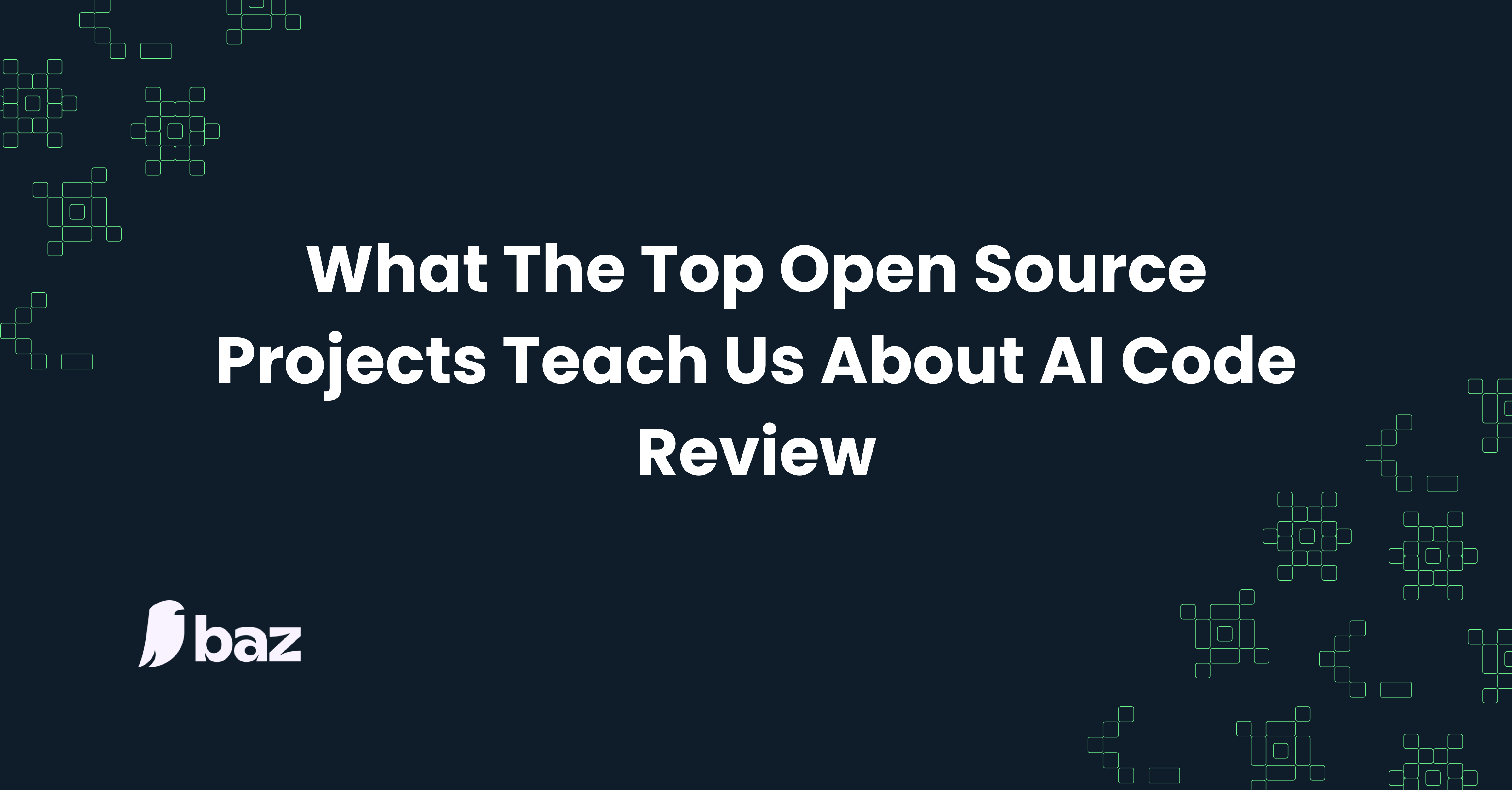What The Top Open Source Projects Teach Us About AI Code Review
What do pull request trends and comments from projects like LangChain, Kubeflow, Terraform, PyTorch, and Spring tell us?
What do pull request trends and comments from projects like LangChain, Kubeflow, Terraform, PyTorch, and Spring tell us?

Some of the best engineering judgment in the world is buried in pull requests.
Maintainers and contributors enforce standards every day in open source, not through checklists or rules engines, but through human conversation. They catch misnamed variables, flag unsafe config changes, ask for cleaner abstractions, and push for better documentation. But once a PR is merged, much of that hard-won insight disappears into the thread.
By analyzing thousands of PR comments across projects like LangChain, Kubeflow, Terraform, PyTorch, and Spring, the open source initiative AwesomeReviewers provides a library of AI-ready prompts that capture the implicit standards top teams already enforce.
This post is a roundup of the trends, patterns in how open source projects actually review code, and what those patterns mean if you're leveraging AI-assisted review systems.
Across nearly every project, naming conventions aren’t just about style. They are a proxy for architecture, abstraction, and intent.
Projects like rails, terraform, and tensorflow all enforce naming practices that:
In AI review, naming is one of the highest-signal judgment calls. The right reviewer prompt doesn't just check format, it enforces meaning.
Sample prompts:
Configuration management is one of the most common themes in top PR comments. Examples include:
ollama, checkov, kubeflow)pydantic, spring-boot, terraform)chef, deeplearning4j)These are the kinds of issues that sneak past tests but create massive downstream risk. They are also a perfect fit for AI reviewers that encode team or platform-specific expectations.
Sample prompts:
We saw repeated calls to:
langchain, aws-sdk, spring-framework)tokio, rails, chef)tensorflow, azure-sdk, terraform)Good documentation review isn't just pedantic. It is the difference between a codebase that's usable and one that burns onboarding time. AI reviewers can help scale this by making the standards explicit.
Sample prompts:
From airflow to grafana, reviewers consistently flag unsafe behavior that might never show up in tests:
Many of these issues live at the intersection of judgment and risk tolerance. Which makes them ideal for judgment-oriented AI review, the kind that understands patterns and surfaces risks, not just line-level issues.
Sample prompts:
In repos like langchain, pytorch, vllm, and mxnet, we found a new layer of review logic:
These are not just programming practices, they are ML infrastructure standards in formation. And reviewers are helping define them.
Sample prompts:
AI code review tools are evolving. The first wave focused on lint-style automation or local suggestion. But real review quality comes from judgment.
Awesome Reviewers reflects that shift. These prompts do not just comment, they encode decisions made by top engineers across thousands of PRs. They answer questions like:
In that sense, they are not just reviewers. They are LLM-powered judges, grounded in real-world engineering wisdom.
AI will not replace code review. But it can help scale the parts that matter, the judgment calls, the institutional knowledge, the standards teams enforce but do not always write down.
Open source already figured a lot of this out. Awesome Reviewers just makes it easier to reuse.
You can browse the full prompt library, try them in your own agent, or contribute your own: awesomereviewers.com.